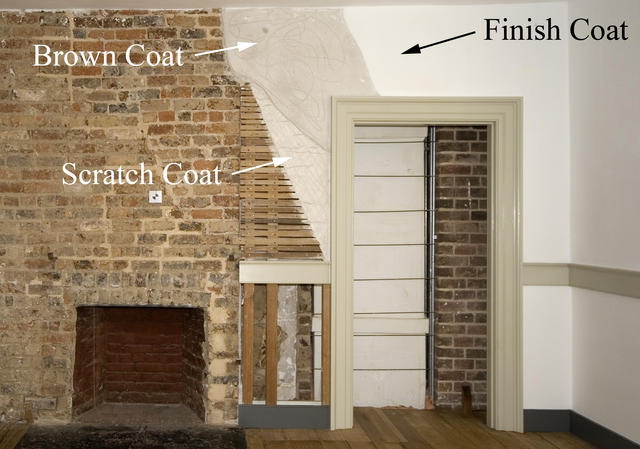
Because the plaster surface got smoother and more refined with each successive coat, in important spaces that were not meant to be wallpapered, it was customary to have three distinct layers of plaster. The first layer, or scratch coat, was usually meant to just fill in the major holes or gaps between wooden lath or to cover the brick walls. The second layer, the brown coat, smoothed the wavy surface of the scratch coat and created a level surface. Traditionally the final coat was the finish coat, which was a thin coating made from almost pure lime that gave the walls a very smooth, hard finish. However, in an effort to economize, secondary spaces (like second floor bedrooms or closets), rooms that were to be wallpapered, and functional spaces like kitchens, often were not finished with all three full coats of plaster.

©The Montpelier Foundation
|
|
An example of a three-coat plaster system installed on the walls of one of the second floor bedchambers. |





